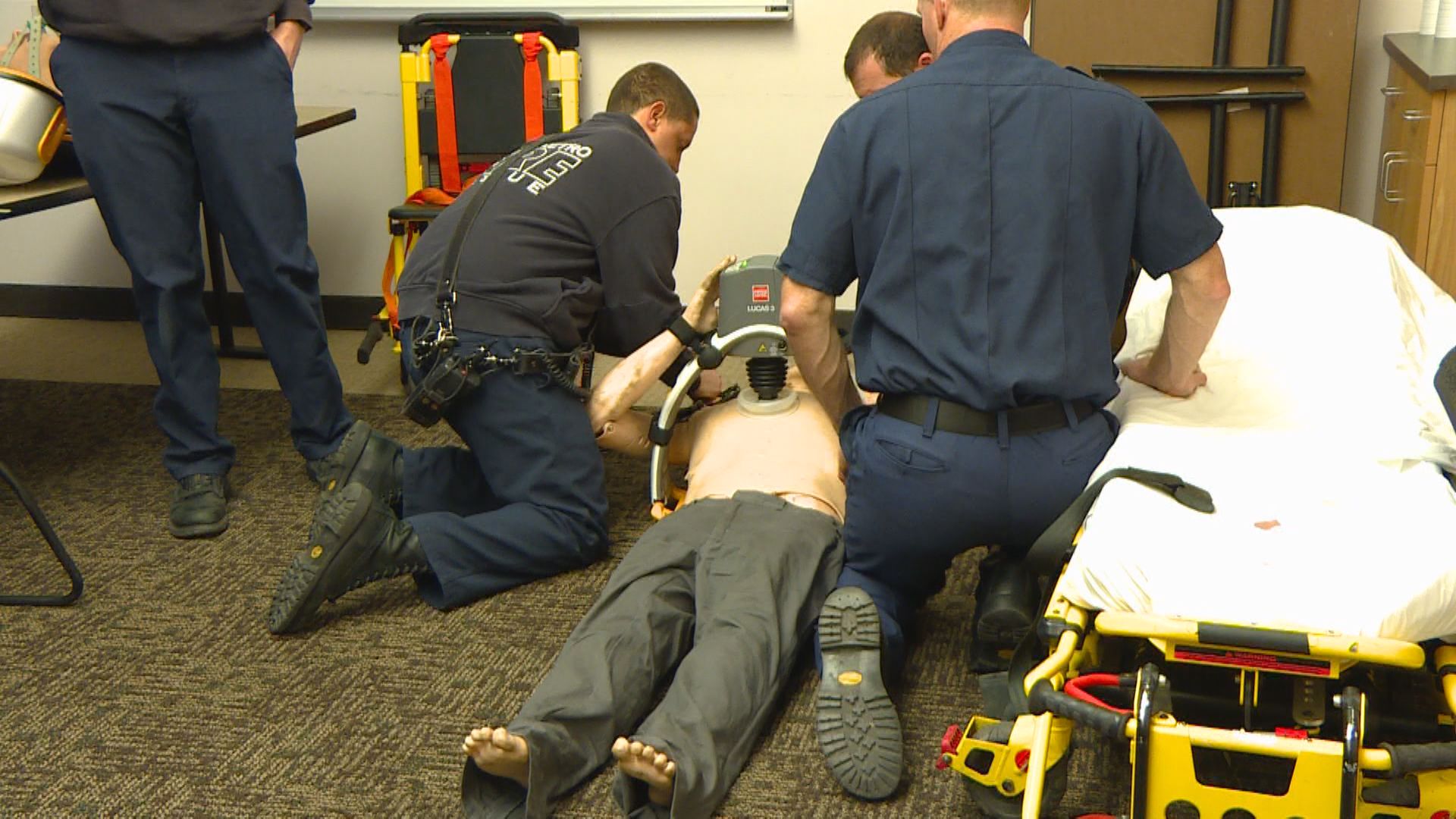CPR saves lives, but it’s not exactly easy for first responders when they’re working in cramped spaces or inside a moving ambulance. Then there’s the problem of fatigue.
“There’s a lot of research that shows even the most fit people, after about six minutes, you’re not able to do quality compressions,” Lt. Mike Binney said.
Lt. Binney trains EMTs and paramedics at West Metro Fire Rescue. For the past couple months, he’s been teaching them to use a new tool called the LUCAS device.
“It allows our paramedics and EMTs to not have to worry about the CPR,” he said. “It does perfectly efficient CPR and it works no matter what angle the patient is at.”

The LUCAS device is placed over a patient’s chest. A pump with a suction cup pushes down and up, mimicking the movement of a paramedic’s hands. The chest compressions are consistent in rhythm and depth each time.
“It allows us to do CPR for way longer than we could with the resources that we have on scene at any given time,” Lt. Binney said.
Once the device gets going, it can free up a first responder to attend to other life-saving measures.
“That means that we’ve got an extra set of hands to intubate or manage the patient’s airway,” Lt. Binney said. “It allows us to be able to get IV medications going even faster.”
Lt. Binney said first responders won’t change their practice of starting with manual CPR.

“When we first show up on scene, it’s most important that we’re able to use our cardiac monitor to see if we can use electricity to put the patient’s heart back into its normal rhythm,” he said. “And then we’ll transition into using the LUCAS device.”
West Metro firefighters have been working with the device at the department’s training center in Lakewood.
“We wanted to get everybody proficient on [the device] before we started putting them on out on the ambulances,” Lt. Binney said.
The LUCAS devices costs about $12,000. West Metro Fire Rescue budgeted internally to purchase five of the devices. Lt. Binney said the department used dispatch data to place the devices on ambulances most likely to respond to CPR calls. West Metro is in the grant-writing process in hopes of equipping all ambulances with the device in the future.

